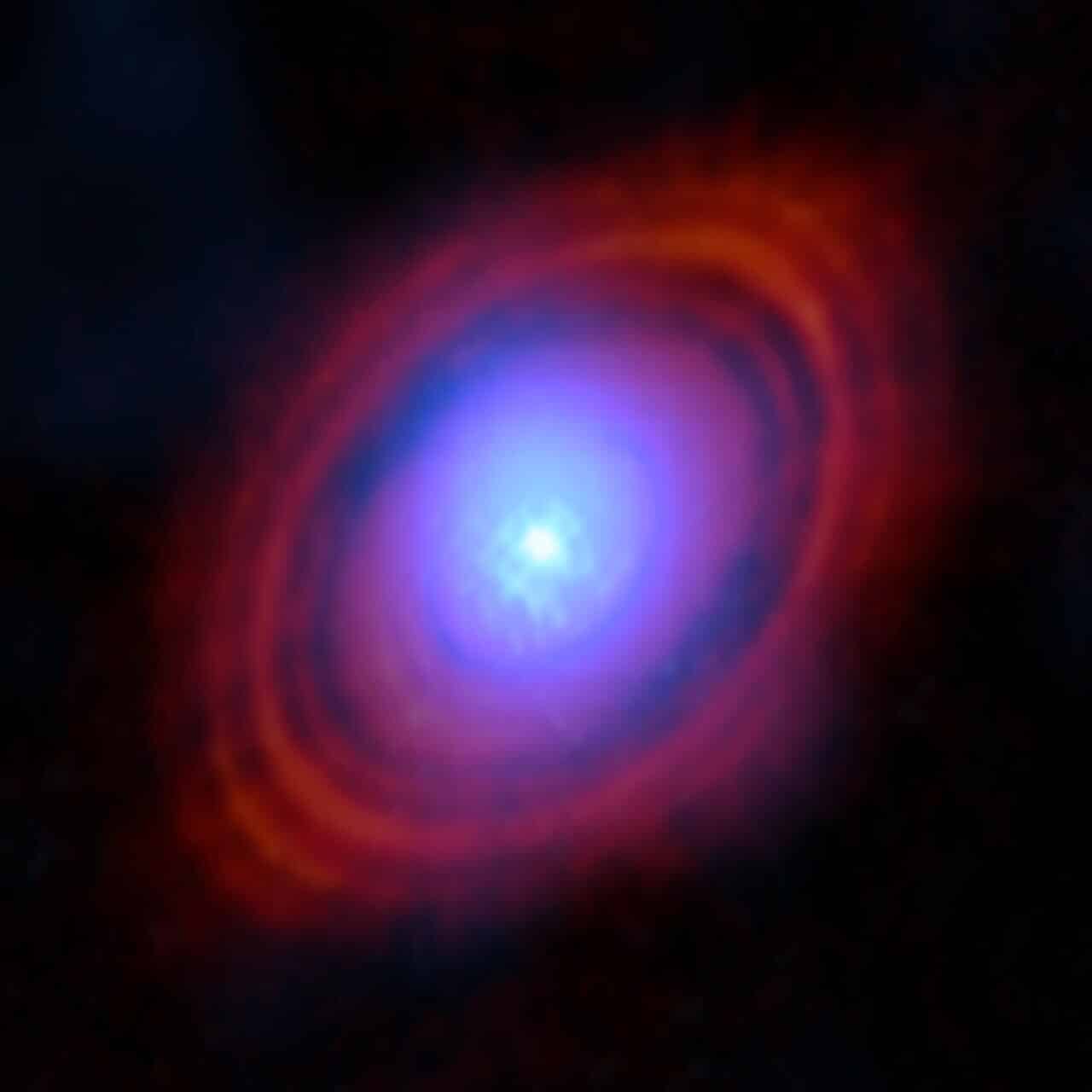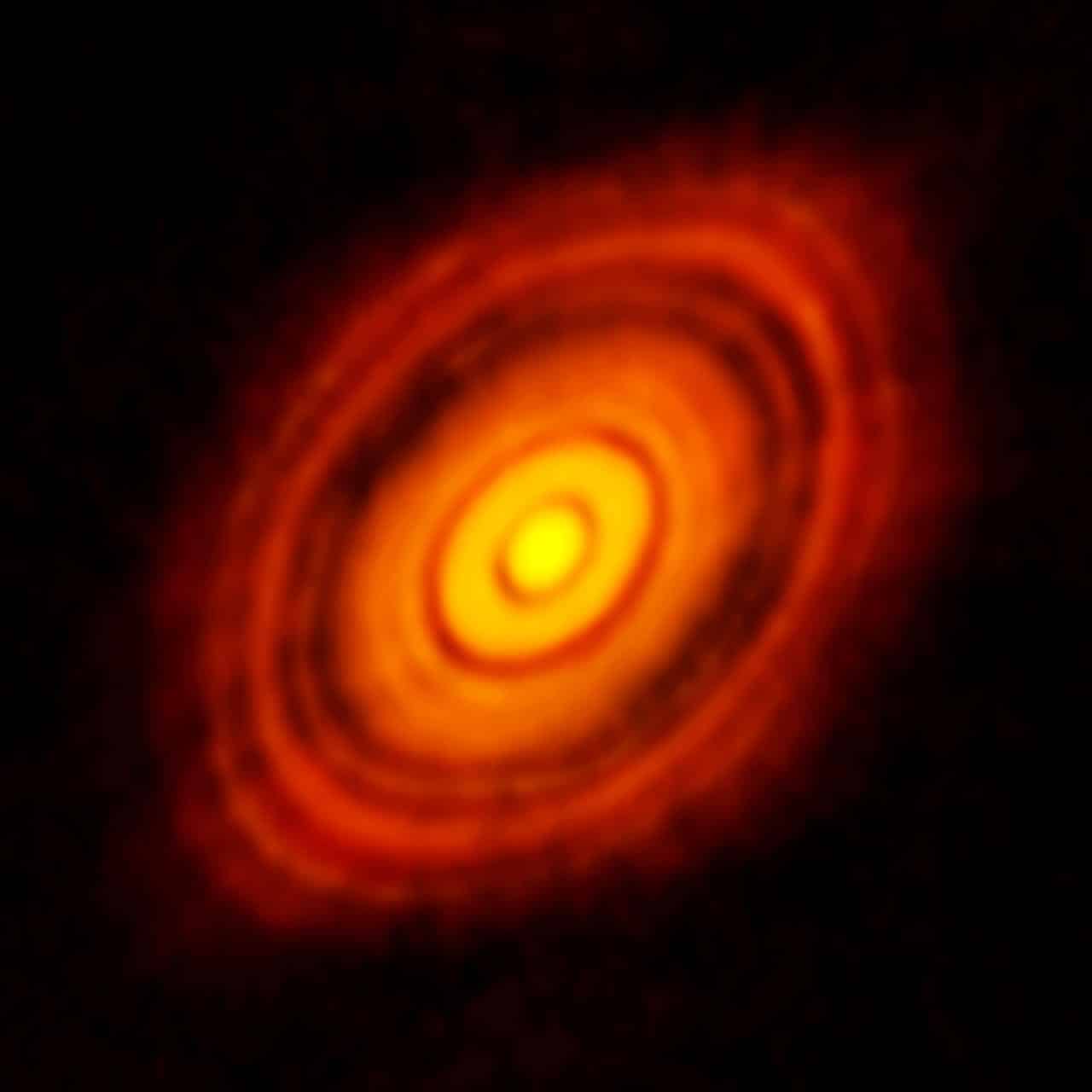An amount of water at least three times greater than the water in all the Earth's oceans was discovered in the inner disk of the young Sun-like star HL Tauri, 450 light-years away from Earth, in the Taurus group

Researchers have found water vapor in the disk around a young star right where planets may be forming. Water is an important component of life on Earth, and is also thought to play an important role in the formation of planets. But until today we have not been able to map how water is distributed in a stable and cold disk - the type of disk with the best conditions for the formation of planets around stars. The new findings were made possible thanks to the Large Millimeter/Submillimeter Array at Atacama (ALMA), in which ESO is a partner.
"I never imagined that we could take a picture of oceans of water vapor in the same region where a planet is likely to form," says Stefano Pacini, an astronomer at the University of Milan, Italy, who led the study published today in Nature Astronomy. The observations revealed an amount of water at least three times greater than the water in all the Earth's oceans in the inner disk of the young Sun-like star HL Tauri, 450 light-years away from Earth, in the Taurus group.
"It's really amazing that we can not only detect water vapor 450 light-years away but also take detailed pictures and separate them spatially," adds co-author Leonardo Testi, an astronomer at the University of Bologna, Italy. The "spatially separated" observations using ALMA allow astronomers to determine the distribution of water in different regions of the disk. "Participating in such an important discovery in the HL Tauri disc was beyond what I expected from my first research experience in astronomy," adds Mathieu Vander Donkett of the University of Liege, Belgium, who was at Strent when he participated in the study.
A significant amount of water has been found in the region where a known gap in the disc of HL Tauri is found. Ring-shaped gaps are formed in gas- and dust-rich disks by young orbiting planet-like bodies as they accumulate material and grow. "Our latest images reveal a significant amount of water vapor at a range of distances from the star that include a gap where a planet could potentially form at this time," Pacini says. It follows that this water vapor can affect the chemical composition of planets formed in these regions.
Viewing water through a ground telescope is a considerable achievement because the water vapor that is abundant in the earth's atmosphere degrades the astronomical signals. ALMA is an array of telescopes in the Atacama Desert, Chile, at an altitude of about 5,000 meters that was set up in an extremely high and dry environment to minimize this distortion, and provide excellent observation conditions. "So far, ALMA is the only facility that can spatially separate water in a cold planet-forming disk," says co-author Professor Wauter Flemings.

"It's really exciting to see directly, in the image, water molecules being released from frozen dust particles," says Elizabeth Humphreys, an ESO astronomer who participated in the study. The dust grains that make up the disk are the seeds of planet formation, as they collide and crystallize into larger and larger bodies that surround a star. Astronomers believe that when it's cold enough for water to freeze into dust particles, things stick together more effectively - an ideal place for planets to form. "Our research shows how water may affect the evolution of a planetary system, as happened about 4.5 billion years ago in our solar system," adds Pacini.
For a message from the Southern European Observatory
More of the topic in Hayadan:
- Project 365 - A star is born
- Planets have been discovered around a metal-poor star
- Complex organic molecules, the basis of life, were discovered in the disk of a nascent solar system
- Infant galaxy in the early universe discovered with the help of a "cosmic telescope"
- Comets as factories for the production of organic molecules

3 תגובות
You really go beyond the limits of your science fiction every time... There is no exit from here to any galaxy, and there is no possibility of discovering anything even at such a distance... You never stop drawing on space, there is no space and there was no space
his age ? Dhilak, even the word sky means it, there-water, and in general all their revelations are revelations to themselves, those who know anything do not need confirmations!
hard to believe